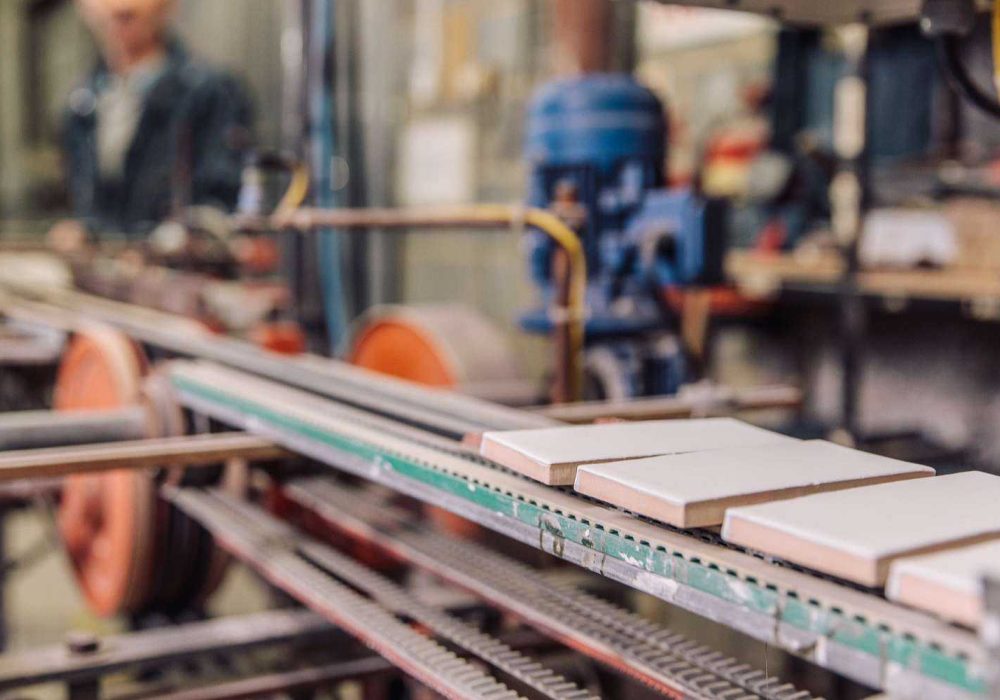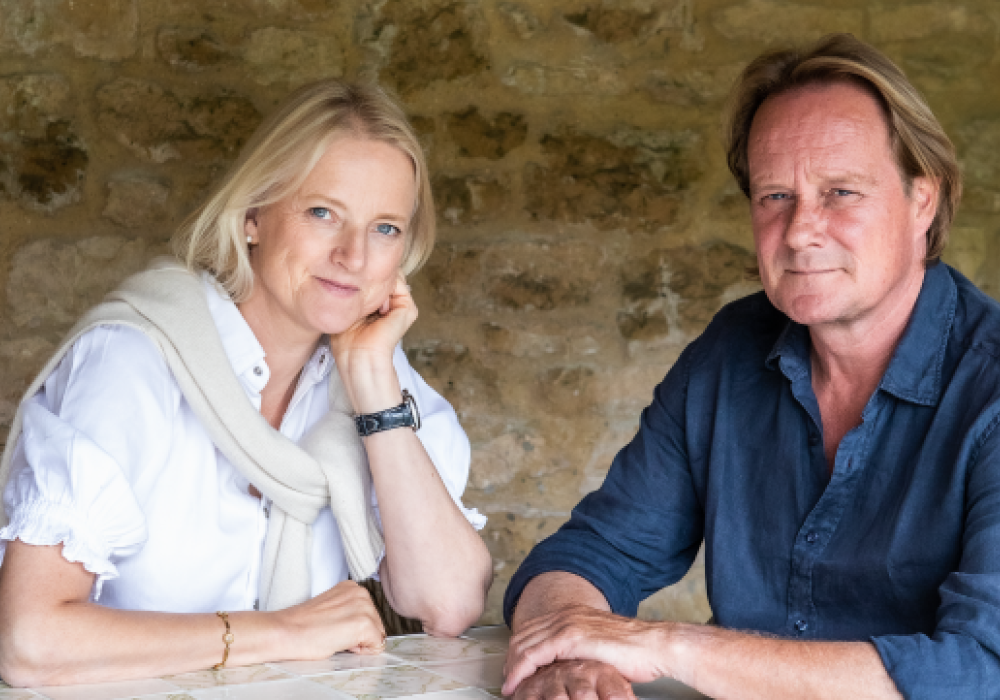

Our history
In the beginning
The story begins in the early 1930s when two schoolteachers, Sylvia Packard and Rosalind Ord, found that their mutual interest in painting ceramic tiles could earn them a living. In 1936 the Packard and Ord partnership, using the hallmark ‘P&O’, began production in Barnfield, Marlborough, specialising in commissions and giftware.
Queen Mary and Fortnum and Mason were regular customers, and examples can still be found today in the V&A, private collections and, of course, on walls across the world.

The impact of war
The Second World War brought an abrupt halt. When the war ended, an ageing Miss Packard sold her share of the partnership to Hugh Robb, grandfather of the current Managing Director, Jamie Robb. The hallmark was changed to 'O&R' (Ord & Robb) and the company continued to specialise in majolica painting – a complex, right-first-time process where a single colour is finely painted on to the chalky surface of the glaze before firing.
Customers included Liberty's, Heals, Harrods and the Medici Society.

Psychedelic experiments
The 50s and 60s witnessed exciting innovation. New glazing techniques using slip trailing and strong interacting colours and glazes resulted in ‘psychedelic’ patterns, many of which proved very popular when the tiles were incorporated into wrought iron tables and stands. Other techniques included screen-printing, enamel painting and under-glazing.
These new glazes caught the eye of Ken Barden, designer for Wimpey Builders, who began to design panels for Packard & Ord to produce for Wimpey homes. Other successes included exclusive tiles designed for tile cheese boards.
In 1961 Miss Ord retired and the company became wholly owned by the Robb family.


The kitchen and bathroom reinvented
The 70s and 80s were a time of huge change in the tile industry. The vogue for fitted kitchens and new interest in the long-neglected British bathroom opened new opportunities. To fend off competition from inexpensive Italian and Spanish imports, Marlborough deepened its research into decorative tiles.



New millennium, new era
Jamie Robb, the current MD, joined the company in 1989 and spent the next decade learning from his father before taking over in 1998. To mark the new millennium, the company was officially renamed Marlborough Tiles Ltd in 1999.
Jamie decided to find a new niche in higher-end, design-led tiles, specialising in the most difficult areas of tile making – complex glazes, hand crafted biscuit and hand decoration. A world-leading 'Lustre' glaze range was followed by silky smooth matt tiles and highly successful ranges designed exclusively for Fired Earth. The company continues to produce ranges for Fired Earth, Neptune and other high end tile retailers.

New opportunities
Early in the new millennium, Marlborough Tiles was quick to spot the potential of porcelain floor tiles and began buying from the world’s leading specialist producers in Italy and Spain. The range of floor tiles rapidly grew to encompass bathroom, kitchen, halls – in fact any indoor or outdoor space.
As the UK’s sources of clay dried up Marlborough stopped manufacturing the base tiles (the ‘biscuit’) and shifted manufacture to a factory in Spain. This turned out to be a blessing in disguise. Any tile can be made quickly and efficiently in any shape, allowing Marlborough to expand its range and focus on its true passion – colour and design.
Meanwhile the variety of hand painted tiles grew exponentially with a far wider range of colours and shapes. Each tile is now produced to each individual customer’s requirements.
A decade of collaboration and craft
Throughout the 2010s, our reputation for expert craftsmanship, nuanced colour palettes, and traditional artisan techniques led to exciting collaborations with a range of like-minded brands.
We worked behind the scenes to create white label collections, allowing our heritage and know-how to shine through in bespoke, beautifully made tiles for others. These partnerships have grown steadily, underpinned by our commitment to quality and timeless design.

Going digital
In 2019, we took a bold step forward with the launch of our eCommerce website, opening up the world of handcrafted and handpainted tiles to a wider audience.
With just a few clicks, customers across the UK could now explore our collections, discover our story, and bring our heritage designs into their own homes—without compromising on the personal service we’re known for.
The choice for designers of distinction
By 2023, in addition to our growing online presence, we had established stronger partnerships with interior designers, developers, and contractors both in the UK and internationally.
From thoughtfully designed residential homes to large-scale commercial developments and country estates, our tiles are a trusted choice for those seeking quality, character, and craftsmanship. These collaborations have allowed us to bring our handmade British tiles to a broader range of projects and design schemes—always with the same attention to detail and design integrity that define our work.

A global perspective
We’re proud to be taking our next step in 2025 with the launch of our website in the USA. For the first time, customers across the United States will be able to order directly from us online, bringing our distinctively British tiles to kitchens, bathrooms, and interiors across the Atlantic. It’s a milestone that speaks to our growing global presence, without ever losing sight of our roots here in Marlborough.
90 years of excellence
In 2026, we will celebrate 90 years of crafting fine English tiles - a true testament to the passion, skill, and artistry that have defined us since the beginning. We’ll be marking this special occasion with stories, events, and a few surprises along the way. Stay connected with us via email and social media to join in the celebration as we honour the past, and look ahead to a bright and beautifully tiled future.
As featured in…












